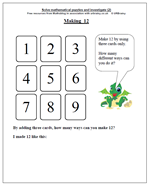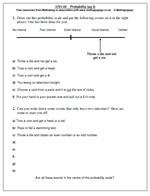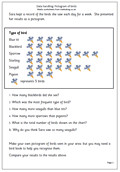 It seems that teachers believe that maths text books are becoming obsolete in the classroom, being replaced by on-line resources. Well, they have a point, where in a text book can you get over 400 maths sheets which are freely available at mathsblog.co.uk?
It seems that teachers believe that maths text books are becoming obsolete in the classroom, being replaced by on-line resources. Well, they have a point, where in a text book can you get over 400 maths sheets which are freely available at mathsblog.co.uk?
7 out of 10 teachers believe that investing in IT equipment is more important that spending money on text books. They also believe that children who do not have internet access at home could be ‘seriously disadvantaged’.
These findings come from a joint report from the Times Educational Supplement and the e-Learning Foundation. Interestingly, it has been published at just the time that Michael Grove is cutting back support for IT in schools.
The report suggests that children without internet access can struggle to do their homework and fall behind, but I think that this is rather too simplistic. There are many parents out there who do not wish their children to use the internet, yet provide superb support for their children. I think back to my days teaching where children from some religious groups were not allowed to watch television, but they were some of the best informed and brightest children in the class.
Read more at the Telegraph
Category: Maths news
SAT tests for 11 year-olds
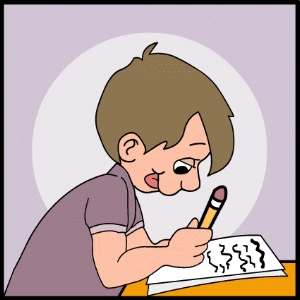 With very little support from anybody, apart from the last Labour government, it seems that things are stirring with regard to the SAT tests for 11 year olds. Last year many teachers and schools boycotted the tests as a protest, meaning this year’s results were pretty meaningless.
With very little support from anybody, apart from the last Labour government, it seems that things are stirring with regard to the SAT tests for 11 year olds. Last year many teachers and schools boycotted the tests as a protest, meaning this year’s results were pretty meaningless.
Michael Grove, the Education Secretary, has been given information that suggests the curriculum for Year 6 has been badly affected by concentrating too much on getting good results in the tests. He has ordered an independent review which will be led by Lord Bew. This review should be able to report by June 2011, which will not be of much relief for all those children talking tests next summer. However, I believe it is a step in the right direction, but Grove is stating that parents will still need to know how well their local primary school is doing. Hopefully this will be judged on a wider range of issues.
Russell Hobby, the general secretary of the National Association of Head Teachers said,
“It is wrong that a narrow snapshot of attainment can be used to judge the performance of a school….it is wrong that the education of children in primary schools is narrow and distorted.”
It seems that the governments efforts to remove quangos will take an early leap forward by getting rid of the Qualifications and Curriculum Development Agency, responsible for the administration of tests, with the Department for Education taking over.
Resource of the Week: Multiplication of money
Here we have a straightforward worksheet dealing with the multiplication of money by a single digit. It would normally be expected to answer these using written methods. The main concern here is that the process is carried out much as multiplying a 3 or 4-digit number, but remembering the decimal point.
The second set of questions, from 9. to 15 should be set out in the correct way and not attempted as shown.
It is often a good idea for children to check the answers to these types of page by using a calculator. (If they just use the calculator to find the answer this is quite obvious as there is no working shown!)
This page any many others can be found in our Four Rules section.
Teacher Awards
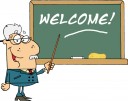 At the start of a new half term it’s good to know that some of the very best teachers in the country have been recognised for their efforts. Eight teachers were named at the reward ceremony in London, hosted by Lenny Henry and attended by stars such as Emma Thompson, Henry Winkler and education secretary Michael Grove.
At the start of a new half term it’s good to know that some of the very best teachers in the country have been recognised for their efforts. Eight teachers were named at the reward ceremony in London, hosted by Lenny Henry and attended by stars such as Emma Thompson, Henry Winkler and education secretary Michael Grove.
Kelly Steeples, a primary teacher from Ossett won the outstanding new teacher award for her amazing lessons incorporating dance and science.
Becky Newman won the award for best teaching assistant. She retook her Maths GCSE at the same time as helping in the maths department at Tendring Technology School, showing it is never too late to learn.
Perhaps the star of the show was Peter Jones who was given a lifetime award after getting over 50 nominations. He has been described as a ‘legend’ with a genius for innovative teaching, again using inventive drama to create outstanding lessons.
Well done to all the winners. As Emma Thompson said at the awards:
“Without great teachers we are not going to have a great society.’
Coming soon: Graphs, shape and division
 Next week I concentrate on resources for younger children. Firstly, there is one of a superb set of year 2 maths worksheets which URBrainy.com have allowed me to publish. It is suitable for 6/7 year old children who are just beginning to understand and interpret block graphs and it looks at the favourite sandwich fillings of a class:- always a popular subject.
Next week I concentrate on resources for younger children. Firstly, there is one of a superb set of year 2 maths worksheets which URBrainy.com have allowed me to publish. It is suitable for 6/7 year old children who are just beginning to understand and interpret block graphs and it looks at the favourite sandwich fillings of a class:- always a popular subject.
A pinboard is a great way to investigate shapes with young children. One can be made by nailing panel pins or small nails into a piece of plywood approximately 24cm × 24cm. I will be publishing a page which looks at how many different 3-sided shapes can be made with a pinboard. The results can be drawn onto the page of ‘pinboards’.
Year 3 children should be getting to grips with some of the easier ‘tables’. Once children have learnt the 2x, 4x, 5x and 10x tables they can put their knowledge to good use by working out the division questions on our division practice page.
Resource of the Week: Year 2 Investigation
Investigations are a great way to reinforce mathematical concepts and learn about patterns in maths. This maths worksheet is posted in our Year 2 section, under Using and Applying Maths and has proved to be one of our most used resources.
We have the digits from one to nine again, this time the task is to use three digits to make 12. This is much harder than just using two digits and it would be a good idea to have some cards printed out with the digits on to help with this. They are available in the reception maths worksheets section.
Again plenty of opportunity for talking about the numbers and what counts as a different way. Is 1 + 2 + 9 the same as 2 + 1 + 9 ?
Coming soon: area, multiples and multiplication
 We will be publishing some quite interesting worksheets next week. The first is a great worksheet for children to develop their ‘trial and improvement’ methods, suitable for year 6. The area of the rectangle is 24 sq cm. One side has a length of 17 cm. What must the other side measure? The catch is that only multiplication can be used to find the answer and a calculator is an absolute must! The aim is to refine the answer closer and closer to the correct one, although this might never be reached!
We will be publishing some quite interesting worksheets next week. The first is a great worksheet for children to develop their ‘trial and improvement’ methods, suitable for year 6. The area of the rectangle is 24 sq cm. One side has a length of 17 cm. What must the other side measure? The catch is that only multiplication can be used to find the answer and a calculator is an absolute must! The aim is to refine the answer closer and closer to the correct one, although this might never be reached!
It is in year 3 that the term ‘multiple’ is introduced. I will be publishing two two Year 3 maths worksheets which ask whether various numbers are multiples of others and it is interesting to see how children tackle these.
The final game in our calculator series will look at tables and multiples. Once again the idea of the game is to get four counters in a row, this time on a multiples of 9 grid. Recognising multiples of 9 is relatively easy as the digits always add up to 9 or a multiple of 9. But knowing exactly which multiple is needed is much harder. Why not challenge your children?!!
Resource of the Week: Probability for Year 5
Probably one of the least understood of maths concepts, especially with young children.
Children should be able to say whether events are impossible , unlikely , likely or certain.
They should also be able to say which events have an even chance of happening (such as tossing a coin and getting a head), but they should be careful not to say that if there are two possibilities, they are equally likely. For example, there are two possibilities – I might buy a new BMW today or I might not. Unfortunately, these two events are not equally likely. Another example of this is I choose a number between 1 and 5. Is the number I choose a prime number? As there are three prime numbers between 1 and 5 (2, 3 and 5) and two numbers that are not, there is not an even chance that I will choose a prime number.
Sometimes further investigations have to be carried out before a probability question can be answered. Take the possibility of a factor of 16 being even. The only way of doing this is to first find all the factors of 16, group them into even or odd and then work out the probability.
Coming soon: Division
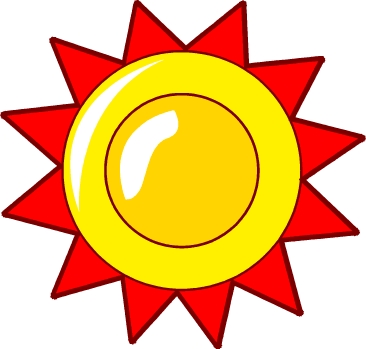 Next week I will be publishing worksheets concentrating on division for years 6, 4 and 3.
Next week I will be publishing worksheets concentrating on division for years 6, 4 and 3.
Firstly, written for Year 6, will be the second of our pages on dividing decimals mentally. Concentrating on just one decimal place it is a good test of how well children know their tables and understand place value.
Coming soon for year 4 is a worksheet which looks for a rapid response from children to show that they clearly understand what is happening when numbers become 10 times or 100 times smaller. All the numbers are multiples of 10 so there is no need to get involved with decimal points.
For year 3 there will be another page that looks at the relationship between division and multiplication and how knowledge of one fact can lead to knowing several other facts. Some children fail to realise that division and multiplication are related, so when it comes to long division later, which involves mostly multiplication, they are lost.
Resource of the Week: Pictogram of birds (year 4)
Here we have another in our series of data handling worksheets for year 4. Each bird on the pictogram represents 5 birds. This page is a starter to show children how to complete and interpret a pictogram so that they can go on to create their own. In this case more information about the most common birds in the garden can easily be found on the internet and a hypothesis can be made as to whether a local survey would give similar results.

